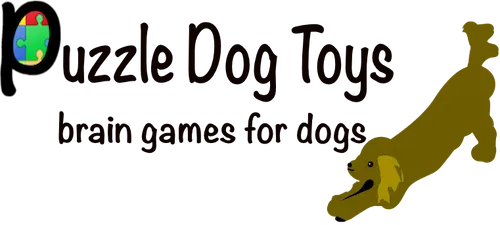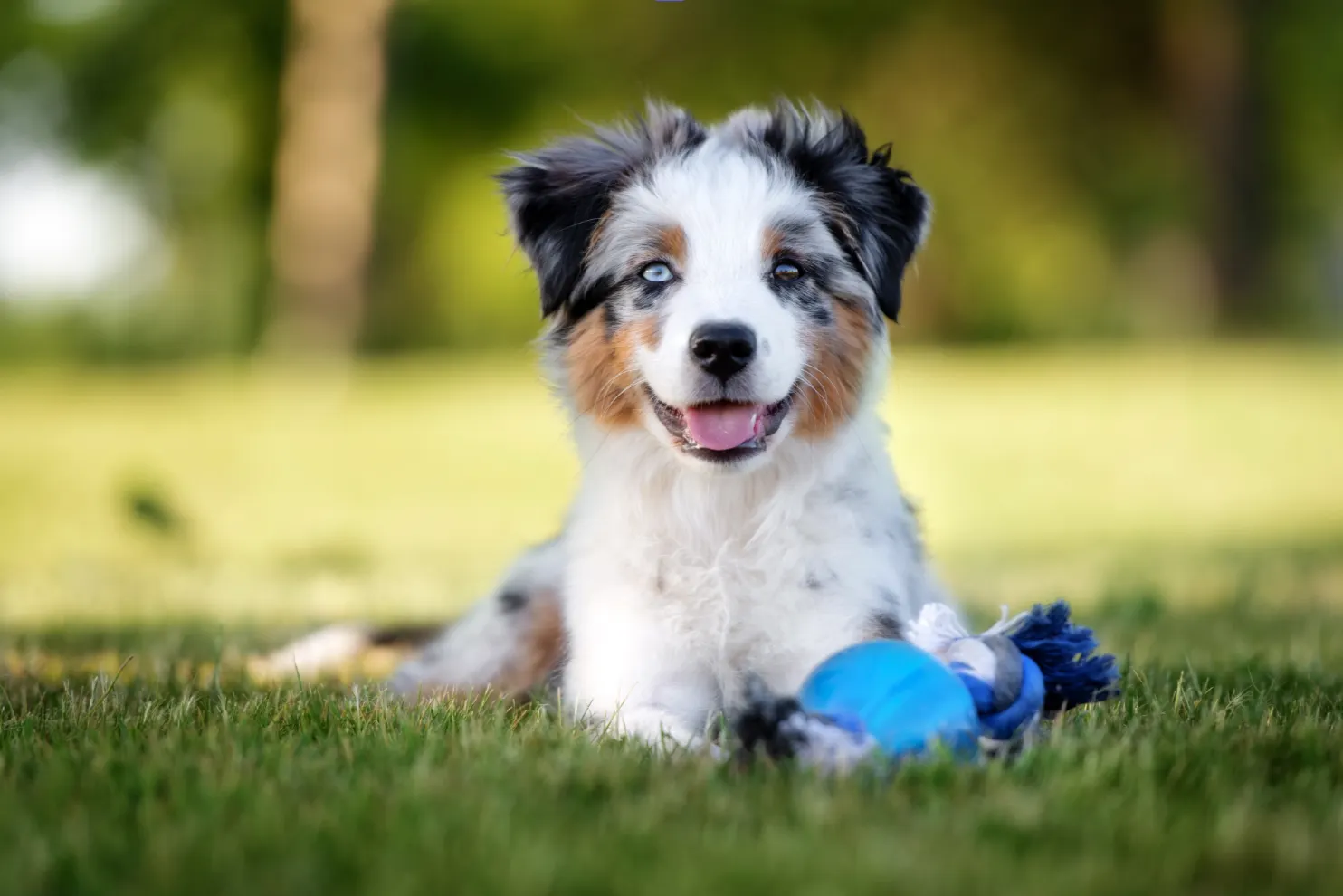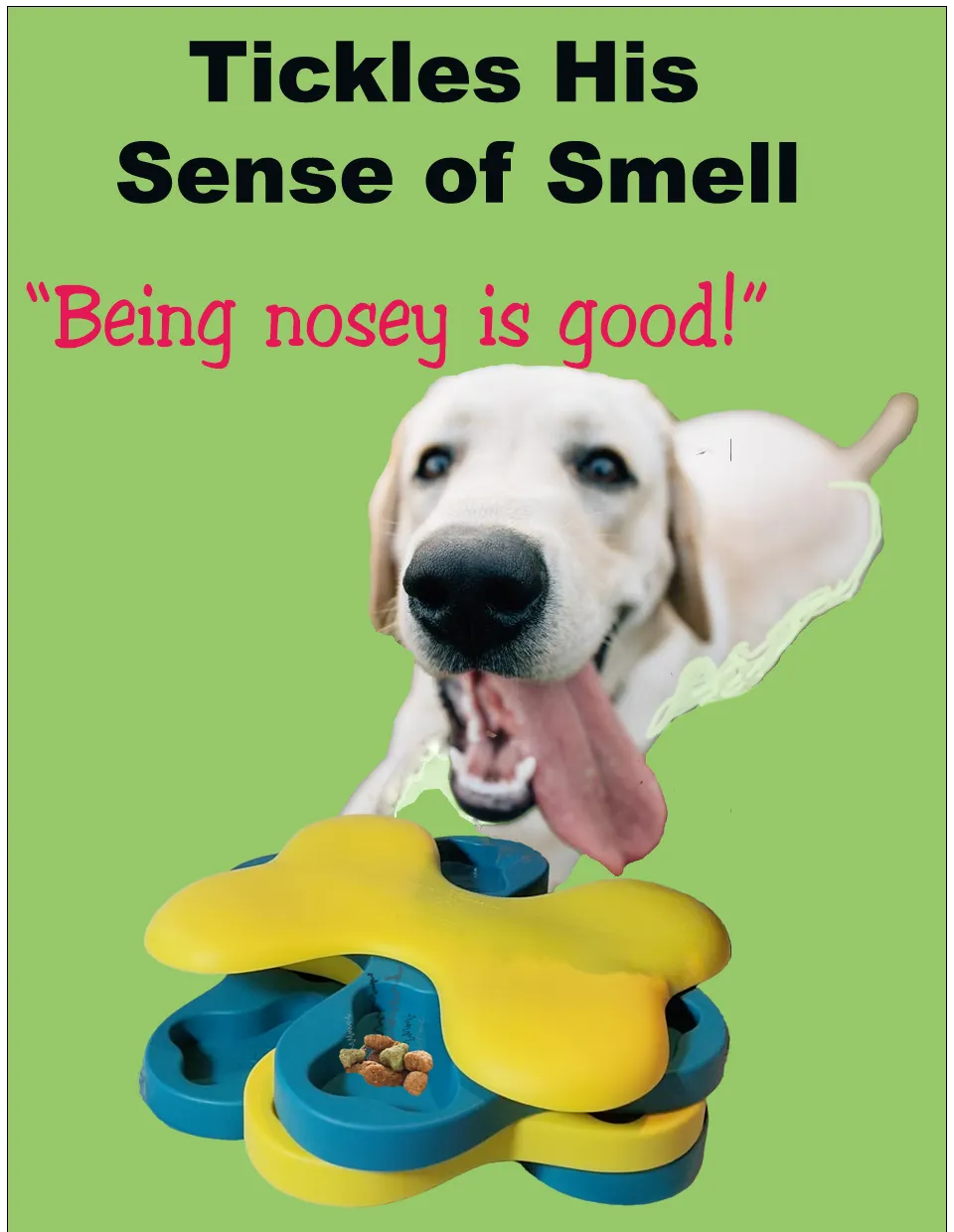Frequently-Asked Questions about Interactive Dog Toys
Frequently-Asked Questions about Interactive Dog Toys
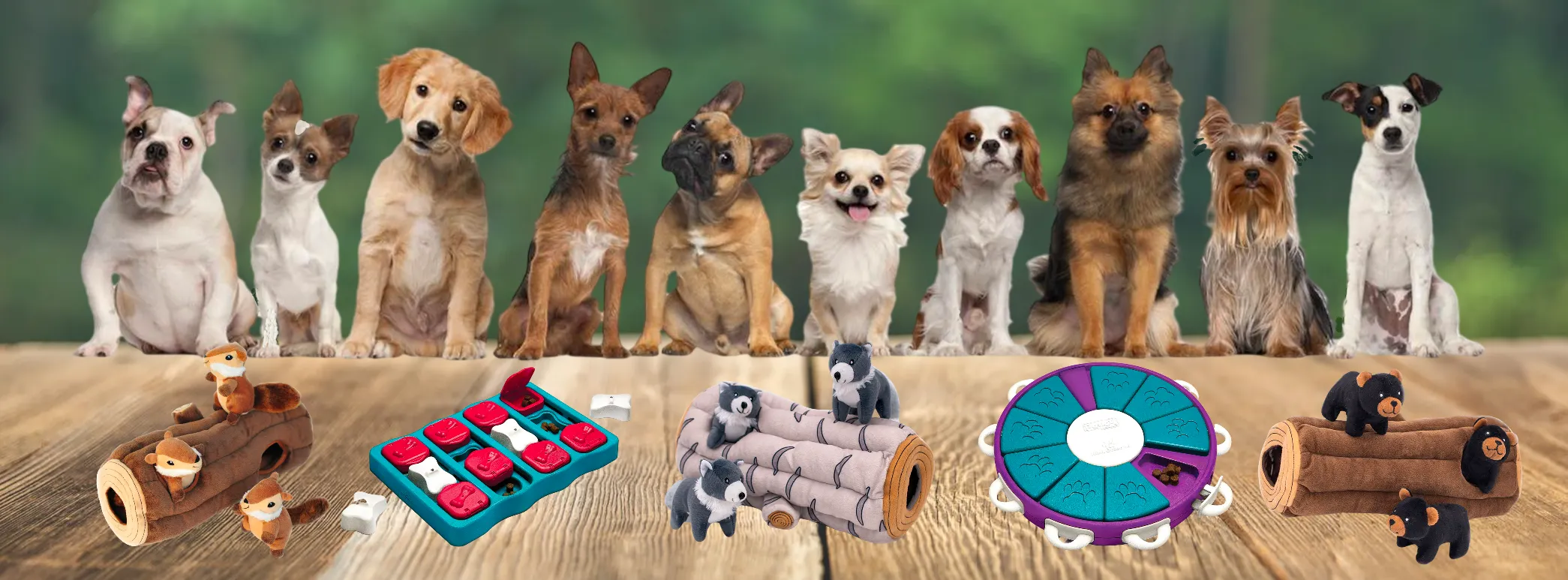
1. What is an interactive dog toy?
Answer: Basically, it is a puzzle, a brain teaser, a challenge for the pet. Some toys stimulate the instinct for hunting, often including a squeaker or animal sound; others use treats to coax the pet to exert some energy, develop its gift of scent, and eat without gulping down the food. With the owner’s participation, the toy becomes a way to play with the pet’s favorite human, which can make both participants happier.
“Interactive dog toys are toys that a dog interacts with and gets a reaction out of.” (https://www.veterinarians.org/interactive-dog-toys/)
According to the website veternarians.org, there are several types of interactive toys:
- Vessel Toys. Vessel toys require the dog to get a piece of treat or kibble using its mind and mouth. They come in many different shapes, sizes, and colors.
- Sensory Toys. Sensory toys are designed to stimulate the dog’s senses. They can be as simple as squeaky toys or as complex as phone-operated robots.
- Treat-Dispensing Toys. Treat dispensers encourage dogs to use their paws and noses to extract a treat. They slow down mealtime and support healthy eating habits.
- Ball Launching Toys. Ball launchers are high-tech gadgets that replace you in the classic fetch game. They keep the dog physically active and entertained.
- Puzzle Toys. Puzzle toys feature many tools like levers, drawers, knobs, and buttons the dog has to use in a certain way to achieve the goal (usually in the form of a treat).
- Video Games. This is the most complex type of dog toy as it features sensors that get active and lure dogs with sounds and colors while dispensing treats.
More generally, however, leaving aside the ball-launchers and video games, there are basically two types of interactive dog toys: plush toys (or, hide and seek toys) and treat puzzle toys.
Hide and Seek Toys are special soft toys that, in most cases, are hidden inside an object such as a soft log or stump. Part of the challenge is for the dog to extract all the toy animals or objects from the larger object. Often, the small animals or objects have squeakers in them to entice the dog.
Interactive Treat Puzzle Toys are usually an object with compartments and/or layers that can contain edible treats. There are various ways for the dog to open the compartments: sliding panels, rotating covers, doors with handles, etc. The challenge is for the dog to use its sense of smell to locate the compartments with treats inside and to discover how to open the compartments. These toys can be in a series of increasing levels of difficulty.
2. How can Interactive dog toys help my dog to be less bored and happier?
Answer: Many dog owners have confirmed that certain dog toys help their pet to be more content and involved. Nina Ottosson, one of the first creators of puzzle dog toys, (https://www.nina-ottosson.com/) describes their importance in the following way:
“Interactive dog toys provide your dog hours of fun... Plus, they are mentally stimulating.
“Interactive toys are great for brain development and can at times work as emotional aid for pups suffering from anxiety and stress. Interactive dog toys work for seniors, too, as keeping the mind sharp delays the onset of canine cognitive dysfunction.
“Interactive dog toys are toys that a dog interacts with and gets a reaction out of. In other words, they keep dogs engaged for longer than a normal dog toy would. The interaction is mentally stimulating.
“For example, a toy that dispenses a treat when the dog plays will keep the dog busy while stimulating its mind. On the other hand, the regular tennis ball is not an interactive dog toy.
“Because of the engagement factor, interactive dog toys are suitable for anxious dogs. They can even keep a dog with separation anxiety occupied, thus preventing stress.”
3. Does the toy present a challenge?
Answer: Some toys are more challenging than others. In fact, the Nina Ottosson puzzle toys are ranked according to difficulty.[3] The toy should not be too difficult for your pet; otherwise, it could discourage your pet or cause them to lose interest. Some puzzle toys can be adjusted for more than one level of difficulty, such as the Dog hide N’ Slide.
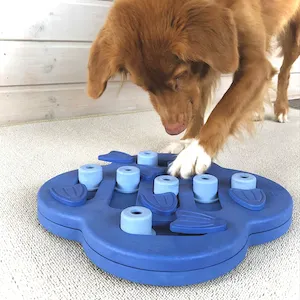
With any puzzle toy or plush toy, initially the owner may need to help the pet. Your pet will almost always welcome your participation in the game.
4. What should I look for in an interactive toy?
Answer: The following are suggestions:
- Material. First, you need to check the materials used to make the interactive toy. Not all materials are equally safe. The materials also affect the overall quality of the dog toy.
- Durability. High-quality interactive dog toys should be made of long-lasting materials and withstand prolonged chewing and playing.
- Size. The size of the interactive dog toy must be in sync with your dog’s size. If the toy is too big, your dog cannot play, and if too small, it will get destroyed very quickly.
- Purpose. Some interactive dog toys keep the dog physically active, while others support healthy eating habits. Get the type of toy your dog will benefit most from.
- Price. Think of the interactive toy as something that needs to be regular replacement – dogs get bored or may destroy the toy. Check the price before purchasing.
- Brand. Finally, get interactive dog toys from a reputable brand. To confirm the brand’s trustworthiness read reviews from other customers and check the guarantee.
5. Will the toy maintain my dog’s attention?
Answer: All dogs can get distracted from an activity or game. Good quality interactive toys should be expected to entice the dog and keep it engaged for at least a few minutes. Some suggestions for maintaining the dog’s interest are:
- Participate with your dog and the toy. If you are interested, your pet will most likely continue to be interested.
- Stop playing if the dog wants only to chew on the toy.
- Put the toy away when not using it.
- Do not leave the toy accessible to your pet if he tends to chew up things.
- It is natural for the dog to lose interest after a while. Do not berate the pet or conclude that the toy is to blame.
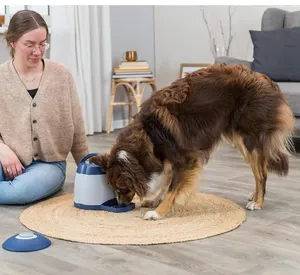
6. Do these toys make my dog smarter?
Answer: Most owners of dogs can attest to the fact that dogs are able to reason and deduce the solution to certain situations. For example, our toy poodle of eleven years old, can no longer jump into his elevated crate. But he has learned that he can jump onto the sofa and then easily enter his crate. We know that toys can 1) encourage your dog to solve problems; 2) alleviate boredom; 3) give your dog a job, all of which can possibly make it smarter.
We now know that training can make a dog smarter. In a study at the University of Milan, trained and untrained dogs were tested to gauge their level of intelligence. The trained dogs did much better than the untrained. Since the test was with a toy similar to our interactive treat toys, it would be safe to assume that the use of such a toy helps to make a dog smarter.
7. Are these toys important for learning new tricks?
Answer: According to Dr. Mark at pethelpful.com, your pet needs new tricks and other commands during training and even as he gets older. These toys provide the environment that make him more intelligent.
In his book, Canine Confidential, Marc Bekoff dedicates an entire chapter to demonstrate that dogs’ favorite activity is Play. Play can be with oneself, with other dogs or with a human. Bekoff quotes another author, Gordon Burghardt, who, in his book The Genesis of Play, gives five criteria for play: play is voluntary, pleasurable, self-rewarding, different structurally or temporally from related serious behavior systems, and initiated in benign situations. These criteria fit perfectly with the use of interactive dog toys.
Bekoff goes on to say that, in addition to the beneficial physical workout that dogs get by playing, other benefits are “cognitive development and training for the unexpected.”
These are exactly the rewards that we hope to see by introducing our pets to the wonderful world of interactive toys.
